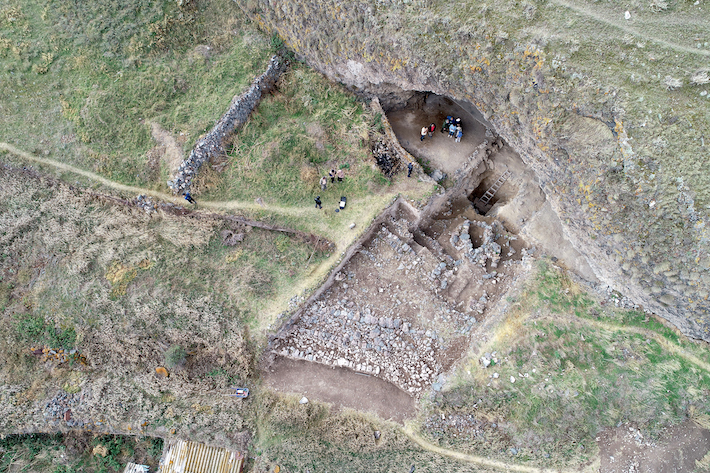 FRANKFURT, GERMANY—According to a statement released by the Senckenberg Research Institute and Natural History Museum, Upper Paleolithic humans processed at least 43 species of plants in a cave in southern Armenia between 40,000 and 25,000 years ago. Andrew Kandel of the University of Tübingen said that an international team of researchers extracted plant DNA from cave sediments, and found larger amounts of plant DNA during periods when humans visited the cave more frequently. They thus attribute most of the plants found to human involvement, explained Angela Bruch of the Senckenberg Research Institute and National History Museum. All but five of the plants are known to be suitable for use as medicines, food, flavoring, mosquito repellent, dyes, and fibers for sewing or making twine. Needles made from animal bone were also found in the cave, Kandel added. Read the original scholarly article about this research in Journal of Human Evolution. To read about the on-site application of X-ray fluorescence in Armenia to sort obsidian artifacts, go to "Point-and-Shoot Obsidian Analysis."
FRANKFURT, GERMANY—According to a statement released by the Senckenberg Research Institute and Natural History Museum, Upper Paleolithic humans processed at least 43 species of plants in a cave in southern Armenia between 40,000 and 25,000 years ago. Andrew Kandel of the University of Tübingen said that an international team of researchers extracted plant DNA from cave sediments, and found larger amounts of plant DNA during periods when humans visited the cave more frequently. They thus attribute most of the plants found to human involvement, explained Angela Bruch of the Senckenberg Research Institute and National History Museum. All but five of the plants are known to be suitable for use as medicines, food, flavoring, mosquito repellent, dyes, and fibers for sewing or making twine. Needles made from animal bone were also found in the cave, Kandel added. Read the original scholarly article about this research in Journal of Human Evolution. To read about the on-site application of X-ray fluorescence in Armenia to sort obsidian artifacts, go to "Point-and-Shoot Obsidian Analysis."
Prehistoric Plant DNA Hints at Early Human Knowledge
